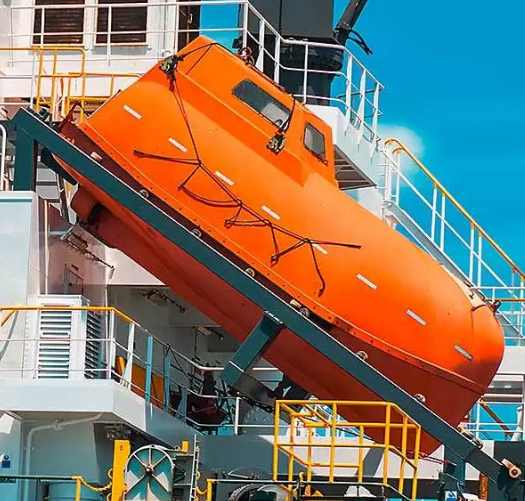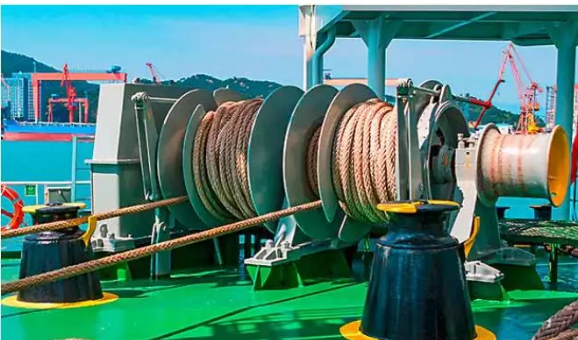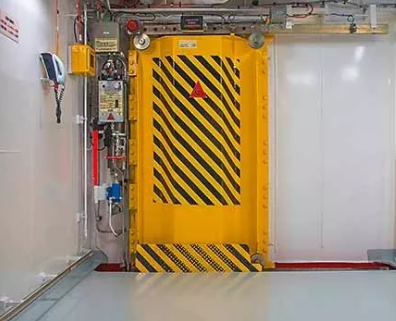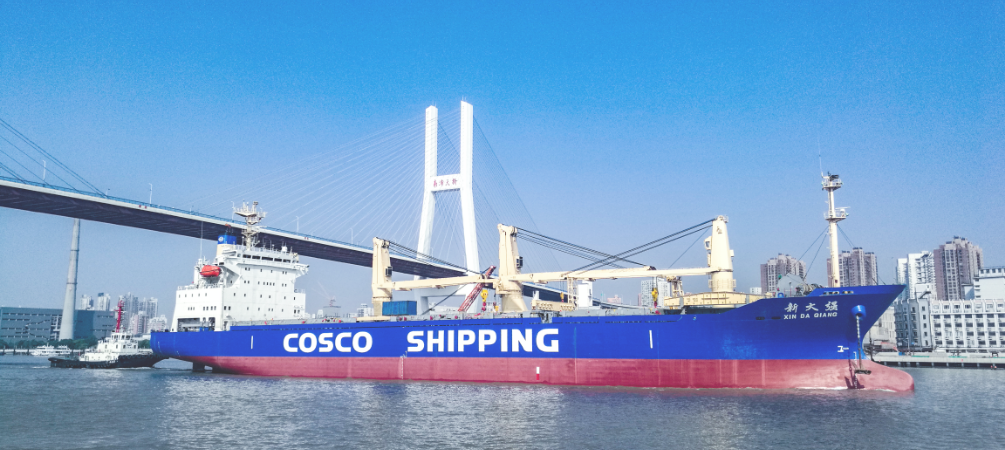


安全是国际海事组织和船级社监管工作的核心。2019年6月海安会第101届会议上,将会有一系列指南草案等待最终表决。这些草案涉及到许多重要问题,并反映了一种新的监管理念:给予更大灵活性。
在过去,国际海事组织和其他监管机构通常针对事故发布法规。但今天的趋势是积极主动,采取目标导向的监管方法,规定应该实现什么,而不是规定如何实现。这赋予了设计者灵活性,可以充分从先进技术中获益。将于2019年6月在海安会第101届会议上提交审批,且很可能于2024年1月1日生效的国际海事组织的一些指南草案,就采取了这种方法。

起重设备和系泊作业的安全
为了减少船上起重设备机械故障造成的损害、伤害和死亡,国际海事组织正在制定合适的强制性要求,以纳入《海上人命安全公约》。草案要求是规范性的,参考了设计、建造和试验的入级标准,对于负载量超过1000公斤安全工作负荷的起重设备,还参考了营运试验、检查、操作和维护方面的行业标准。试验和检验要求可能是追溯性的。
系泊作业涉及同样危险的活动。因此,国际海事组织审查和修订了《海上人命安全公约》的相关要求,并为新船起草了新的和经修订的指南;系泊设备(包括缆绳)的检验和维护要求,预计会追溯应用。

系泊作业存在潜在风险,因此IMO审核和修正了相关的SOLAS要求。
极地水域的安全相关设备
自2017年生效的《极地水域船舶航行安全规则》(Polar Code)只是一个开端:国际海事组织针对在极地水域营运的船只,对其导航和通信设备以及救生设备,制定了建议案。导航和通信设备方面的新指南文件,涉及到环境因素,如极地温度、承受破冰情形的机械冲击试验、积冰和低温下的电池性能。救生设备和装置指南(LSA)根据评估标准概述了降低危害的建议。这些评估标准包括最大预期救援时间、极地温度下作业、冰上作业、救生设备和装置的积冰、高纬度作业的影响、长时间黑暗中作业以及弃船于冰上或陆上的可能性等。应该注意的是,建议携带的额外衣物、生存设备和水可能会影响救生艇筏的容量。然而,实际的容量调整(如有)将取决于救生设备的保温和加热等因素。
滚装船的安全
国际海事组织有两项提案,涉及到滚装和类似机动车辆载运船舶的潜在危险:一项法规修正案称,封闭处所通风系统的开口必须视为稳性计算的进水点,因为车辆在船上时通风必须连续进行,因此通风口必须保持打开。
为了解决客船滚装甲板上的火灾风险,特别是与冷藏装置和电气系统有关的风险,国际海事组织已经同意了带有详细操作措施的暂行准则草案,以及对新建客滚船上消防安全系统设计的建议案,例如增强的火灾探测技术、闭路电视和非露天滚装甲板。2018年或以后带有DNV GL附加标志F(A,M,C)的船舶,已经符合这一最佳实践。
鼓励船东和船舶营运人检查其带有开放式车辆甲板或露天甲板的客滚船,以确保永久性开口和救生艇之间有足够的距离。
岸上电源
为了保护港口城市和沿海地区的居民免受船舶废气排放的影响,当局越来越要求船舶在港时要使用岸电。国际海事组织正在制定岸电安全操作指南,并且正在考虑法规修订。具体技术要求将由相关文件颁布。
沿海和港口城市的居民要求终止船舶带来的空气污染。IMO正在编制新的停泊船舶岸电安全操作指南。
救生设备设计的灵活性
国际海事组织对《海上人命安全公约》第II-1和III章替代设计和指南(MSC.1/Circ.1212)的修正草案,将允许救生设备和装置偏离规定性要求,但要达到同等的安全水平并满足《海上人命安全公约》要求的目的。国际海事组织确定了目标、功能要求和预期性能标准,为替代和创新型救生设备的设计提供了灵活性。
救生艇筏的通风
一系列完全不同的情形使得室外高温下的救援行动变得复杂:在满载人员的全封闭救生艇上,条件可能很快就难以忍受。因此,国际海事组织制定了救生艇筏通风要求,以降低过热和CO2浓度过高的风险,建议最低通风速率分别为5立方米/小时/人,CO2浓度不得超过5000 ppm。《LSA规则》的这些修正案将适用于所有货船和客船。
水密完整性
国际海事组织审查了《海上人命安全公约》关于水密完整性的设计标准,以与2009年引入的破损稳性概率方法保持一致。一项针对水密门和其他部件的建议修正案,考虑到了在客船上引入安全中心和稳性计算机,以更好地覆盖客船舱壁甲板上方的所有水密边界。
DNV GL建议密切关注2019年6月海安会第101届会议的结果,并做好相应准备,把批准的修正案实施到国际海事组织的强制性文件中去。DNVGL还将通过自己的法规和技术通讯,向订阅客户通报MSC第101届会议的结果。

SOLAS对水密门和类似部件的设计标准正处在修订中,已考虑到了破损稳性概率。
﹏﹏﹏﹏﹏﹏﹏﹏﹏﹏﹏﹏﹏﹏﹏﹏﹏﹏﹏﹏﹏﹏﹏﹏
Safety is what the regulatory work of IMO and classification societies is all about. A set of draft guidelines up for final voting at MSC 101 in June 2019 addresses a number of important concerns and reflects a new regulation philosophy that promises more flexibility.
While in the past, IMO and other regulatory bodies typically issued regulations in response to incidents, the trend today is to be proactive while pursuing a goal-based regulatory approach that defines what should be achieved, rather than how to achieve it. This provides flexibility for designers to reap the full benefits of advanced technology. A number of IMO draft Guidelines, which are subject to approval by MSC 101 in June 2019 and will likely enter into force on 1 January 2024, take this approach:
Safety of lifting appliances and mooring operations
To reduce damage, injuries and fatalities resulting from mechanical failure of lifting appliances on board ships, IMO is developing appropriate mandatory requirements for inclusion in SOLAS. The draft requirements are prescriptive and refer to class standards for the design, construction and testing and to industry standards for operational testing, inspection, operation and maintenance of lifting appliances with capacity above a safe working load of 1,000 kg. The testing and inspection requirements will probably be retroactive.
Mooring operations involve equally hazardous activities. IMO has therefore reviewed and amended the relevant SOLAS requirements and drafted new and revised guidelines for new ships; the inspection and maintenance requirements for mooring equipment, including lines, are expected to be applied retroactively.
Safety-relevant equipment in polar waters
The Polar Code, in force since 2017, was just the beginning: IMO has developed recommendations for navigation and communication equipment as well as for life-saving appliances for ships operating in polar waters. The new Guidance document for navigation and communication equipment addresses environmental factors such as polar temperatures, mechanical shock testing to withstand ice breaking situations, ice accretion and battery performances in cold temperatures. The Guidelines for life-saving appliances and arrangements (LSA) outline recommendations for mitigating hazards based on assessment criteria such as maximum expected time of rescue, operation at polar service temperatures, operation in ice, ice accretion of life-saving appliances and arrangements, the effect of operation in high latitudes, operation in extended periods of darkness and the possibility of abandonment into ice or land. It should be noted that the recommendations to carry additional clothing, survival equipment and water may affect the capacity of the survival craft. However, the actual capacity adjustment, if any, would be dependent on factors such as insulation and heating of the LSA.
Safety of ro-ro passenger ships
Two IMO proposals address potential hazards on board ro-ro and similar motor vehicle-carrying vessels: a regulatory amendment says openings to ventilation systems for closed spaces must be considered as flooding points in stability calculations because the ventilation must run continuously when vehicles are on board, and ventilation openings must therefore remain open.
To address fire risks on ro-ro decks of passenger ships, typically associated with reefer units and electrical systems, IMO has agreed on draft interim guidelines detailing operational measures and recommendations for the design of fire safety systems on board new ro-ro passenger ships, such as enhanced fire detection technology, CCTV and non-open ro-ro decks. Vessels with DNV GL additional class notation F (A, M, C), 2018 or later are already in line with this best practice.
Owners and ship operators are encouraged to review their ro-ro passenger ships with open vehicle decks or weather decks to make sure there is a sufficient distance between permanent openings and the survival craft.
Onshore power supply
To protect residents of port cities and coastal regions from ship exhaust gas emissions, authorities increasingly require the use of shore power when ships are in port. IMO is developing guidelines for safe operation of onshore power and is considering potential regulatory amendments. Specific technical requirements will be left to the relevant instruments.
Flexibility in design of life-saving appliances
The IMO draft amendments to the guidelines on alternative design and arrangements for SOLAS Chapter II-1 and III (MSC.1/Circ.1212) will allow life-saving appliances and arrangements to deviate from prescriptive requirements, provided an equivalent level of safety is achieved and the intent of the SOLAS requirements are met. IMO defines goals, functional requirements and expected performance criteria providing flexibility in the design of alternative and innovative life-saving appliances.
Ventilation of survival craft
An entirely different set of conditions complicate rescue operations at high outside temperatures: in a totally enclosed lifeboat full of people, conditions can quickly become unbearable. IMO has therefore developed ventilation requirements for survival craft to reduce the risk of overheating and high CO2 concentrations, proposing a minimum ventilation rate of 5 m3/hour/person, respectively and that CO2 concentrations are not to exceed 5,000 ppm. These amendments to the LSA Code will apply to all cargo and passenger ships.
Watertight integrity
IMO has reviewed the SOLAS design criteria for watertight integrity for consistency with the probabilistic damage stability approach introduced in 2009. A proposed amendment addressing watertight doors and other elements reflects the introduction of safety centres and stability computers in passenger ships and aims to better cover all watertight boundaries on or above the bulkhead deck in passenger ships.
DNV GL recommends to monitor the outcome of MSC 101 in June 2019 and to prepare for implementation of approved amendments to mandatory IMO instruments accordingly. DNV GL will also inform subscribed customers through our Regulatory and Technical newsletters about the outcome of MSC 101.









